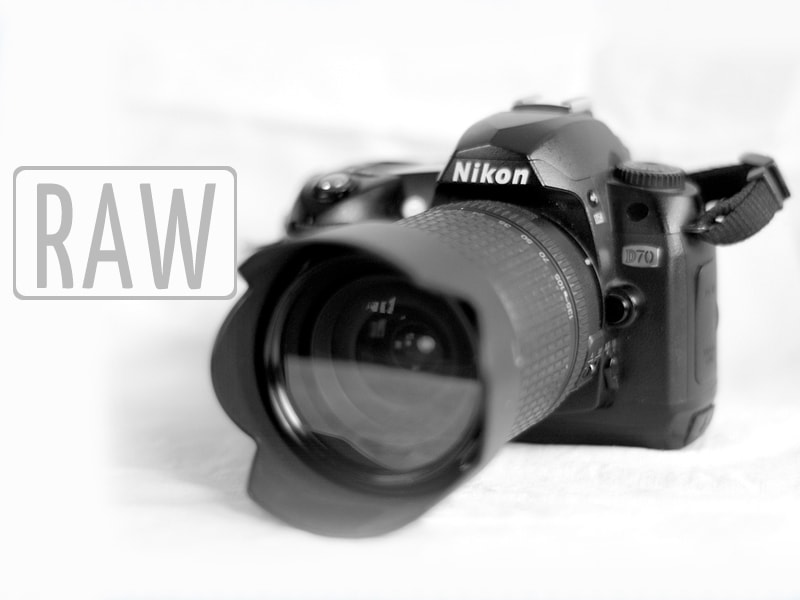If you’ve just discovered the RAW format, you’ll be impressed, you’ll think that good photographers often take their photos with their SLR cameras in RAW mode, so you have to do it too. While this may be true, I do not agree with the idea that you necessarily have to take pictures in RAW format. Or at least not always. Last week we saw some basic elements about raw format and some of its pros and cons. I also explained under what circumstances or for what type of situations it was advisable to take photographs in RAW mode and under what circumstances it was not.
So, assuming you’ve thought twice and finally come to the conclusion that you need to take RAW photos, assuming you’ve already done so, let’s see how to manage a RAW file.
- Normally in Windows we can see our photos as thumbnails and thus decide which one we want to open and process.
- This in RAW format is not possible.
- RAW files will appear in the folder as unrecognizable files and by default we will not be able to see any details.
- To solve this problem.
- We will need to install the corresponding WIC codec for our SLR camera.
- For example.
- For Nikon.
- You must download and install the Nikon WIC codec.
- Once installed on our computer and restarted.
- We can see thumbnails of our RAW files without any problem.
To start processing RAW files, the first thing to do is, as always, to connect our camera or memory card to the computer and copy our RAW files to a folder on your computer, it is possible to skip this step and work directly from the memory card but the RAW files are usually a bit heavy and the processing will be slow if we do it on the memory card. Better to copy the files to the computer’s hard drive, I usually create a folder on the desktop and copy them there.
Most photo reading, editing and processing programs do not read RAW, this is mainly the case on two things: on the one hand, it is because raw format is not considered an image or a photo, but as a series of data superimposed on top of each other and forming the same file. This is a file with data waiting for processing, it has not yet become a photo. However, RAW files do not have the same extension. For example, all JPG photos have the extension. JPG files, but RAW files have a different extension for virtually all cameras. Nikon RAW usually has the extension. NEF o. NRW, the Canon RAW has. CRW and. CR2, and so on?
Therefore, to open a RAW file and process it, we will need to install a compatible program whose purpose is precisely to decrypt the RAW file and allow us to work on it by converting it into a photo. Decent JPG.
There are a wide variety of programs with which you can open RAW files, most are paid, but there are free ones, some are more complex to manage, others much easier?
Option A: the standard SLR camera software. Most SLR cameras come from the factory with a CD that usually includes the camera’s own software for photo editing. By installing the software we can open our RAW files without any problem, but only those of this camera and sometimes only those of this model.
Option B: I personally use Adobe Photoshop CS4. This extremely famous program does not open RAW on its own, but there is an add-on that, once installed in Adobe Photoshop, will allow us to open and work with our RAW in peace. This add-on or plug-in is called Adobe Camera RAW (ACR). Among its many advantages, I highlight its compatibility, if not all, with at least most cameras and SLR models on the market (provided you download and install the latest version).
Option C: rights-free software. Examples like GIMP with its UFRaw plugin; RawShooter Essentials is also free and quite intuitive; or RawStudio and RawTherapee are free options that we can download and start using right away, google them and you will see that they exist as a direct download totally free and legal.
Option D: paid programs. Adobe Photoshop, as I mentioned at the beginning, is for me the best option with its ACR add-on, but also Adobe Lightroom, which apparently has better performance than Photoshop. Other payment program options to consider are Aperture, Photoline, and Phase One Capture One.
Once we have chosen a program from the list above and installed it, we will be ready to start working with our photos and RAW files. Next week we will see what parameters we can manage in RAW mode processing. If you want to continue with the step-by-step explanation, make sure that you have installed Adobe Photoshop CS4 or CS5 with the Adobe Camera RAW add-on.
Prepare. See you next week.

